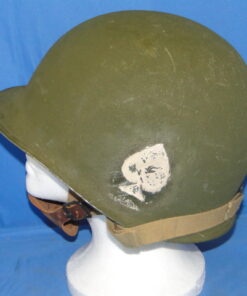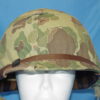Ww2 us paratrooper helmet price
TheWw2 us paratrooper helmet price is a remarkable piece of military history.
known for its unique design and significance in airborne operations during the Second World War.
Historical Background
Developed for paratroopers, this helmet was designed to provide maximum protection while allowing for the necessary mobility and comfort during airborne drops. The ring design, often referred to as the “jump helmet,”
became iconic among American airborne forces, especially during key battles such as D-Day and the Battle of the Bulge.
Design Features
Collecting Tips
Care and Preservation
Regular inspections will help ensure its preservation, allowing it to be a stunning display piece.
The M-1 steel pot helmet is renowned for its utilitarian design and remarkable longevity, making it one of the most iconic helmets used by U.S. forces. Many newsreels and photographs from World War II depict GIs using their helmets for various tasks, including cooking, digging, and carrying water.
This helmet is perhaps one of the most recognizable symbols of WWII, with around 8 million produced by numerous manufacturers during the conflict.
details
The helmet features a steel outer shell paired with a separate fiberglass inner shell, commonly referred to as the liner.
The outer shell is equipped with a fixed canvas chin strap, while the liner includes a lighter, removable brown leather chin strap.
Introduced in 1941, the M-1 helmet’s early versions came with a fixed bail system. However, it was soon discovered that this design had a higher failure rate due to the stress exerted on the bail when soldiers were running, leading to breakage.
To address this issue, the swivel bail was developed, which incorporated a hinging mechanism that allowed the bail to flex under pressure, reducing stress on the weld.
More
The helmet’s edge features a fold that runs around the entire perimeter, effectively covering any sharp edges resulting from the manufacturing process to protect soldiers from cuts.
The meeting point of this fold creates a seam, which in WWII helmets is located at the front. In later war models and post-war examples, this seam was moved to the back.
Be the first to review “Ww2 us paratrooper helmet price” Cancel reply
Related products
WW II AMERICAN HELMETS
WW II AMERICAN HELMETS
WW II AMERICAN HELMETS
WW II AMERICAN HELMETS
WW II AMERICAN HELMETS




























Reviews
There are no reviews yet.